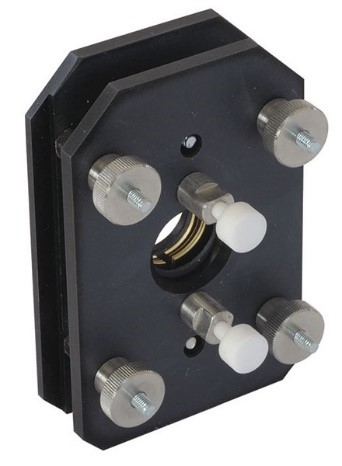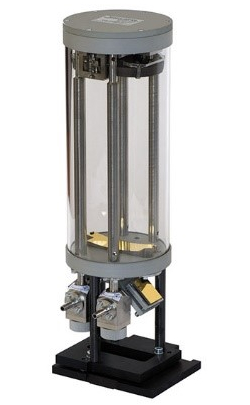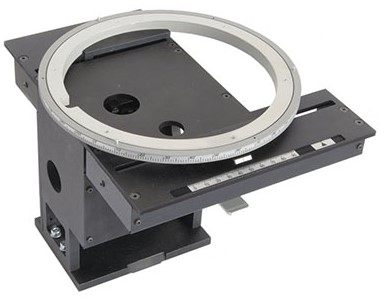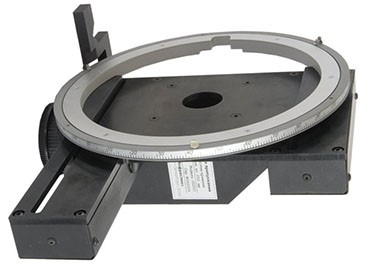-
Products
- Gas analysis systems
- GAOS SENSON gas analyzers
- GAOS MS process mass spectrometry
- MaOS HiSpec ion mobility spectrometer
- MaOS AxiSpec ion mobility spectrometer
- Applications
- News
- Events
- About us
IROS P series FTIR spectrometer can be equipped with a large number of extension modules. It makes it possible to use IROS P series spectrometers for different common and specific applications.
|
|
|
|
|
|
Quartz cells |
Demountable cells |
Fixed optical length gas cell |
Multi-pass gas cells |
|
|
|
|
|
|
Thermostable gas cell |
Specular reflection modules |
Diffuse reflection module |
HATR module |
|
|
|
|
|
|
Autosampler for gasoline analysis |
Modules for wafer analysis |
Near-IR module |
|
 |
Quartz liquid cells
Quartz cells are designed for testing liquid samples and have a fixed optical path length. They are used, in particular, to determine the mass concentration of petroleum products in water and oil in liquid ammonia by infrared absorption spectra (control area 2925 cm-1).
The cells are made of optic quartz glass of KV grade.
Quartz cells are delivered with a cover from fluoroplastic.
The length of the optical path 1, 3, 5, 10, 20, 30, 40, 50 mm. |
|||
Demountable gas cellsOstec offers two types of demountable gas cells:
Brass gasket kit: 0.1; 0.2; 0.3; 0.5; 0.8 Window material: KBr, CaF2, ZnSe
Window material: KBr, CaF2, ZnSe Window size - Ø 40 mm |
 |

|
||

|
Gas cell with a fixed optical length
The cell is designed to determine impurities in gases with a threshold of < 1%.
Flow mode or gas filling after vacuuming
Stainless steel casing, two bellows valves
Optical length – 100 mm
Windows Ø40 mm, KBr with waterproof coating or CaF2 |
|
Multi-pass gas cells
Multi-pass gas cell is designed for the determination of impurities in gases with a threshold of < 0.1 ppm
Optical length 0.8 – 40.56 m, step is 0.8 or 3.12 m
Window material: KBr with waterproof coating or CaF2 |
 |
|
|
|
Gas thermostatable cell
The cell has 100 mm fixed optical length and is designed to investigate gases, gas mixtures, and vapors in flow or static mode by IR transmission spectroscopy with the ability to maintain or change the temperature of the sample.
The cell is installed in the spectrometer and connected to the source of the investigated gas samples using a gas transfer tube
Exchangeable optical windows ZnSe and KBr
The possibility of heating up to 250°C. The built-in heaters and the cell temperature sensor are controlled by the temperature controller (included in the scope of delivery)
The material of the cell housing is stainless steel |
Specular reflection modules
Specular reflection modules are designed for routine measurements of solid samples and coatings with a thickness range from nanometers to microns: for identification of coatings and determining their thickness. Specular reflection, obtained for relatively thin films on a reflective substrate and measured for an angle of incidence close to normal, is usually highly accurate and gives spectra very similar to transmission spectra.
Features:
|
 |

|
Diffuse reflection moduleThe module is designed to measure the diffuse reflection spectra of scattering surfaces and dispersed samples in the mid- and near-IR spectral range.
Diffuse reflection spectra of the investigated samples are measured against a suitable non-absorbing comparison sample. Measurement conditions tend to be chosen in such a way as to minimize the mirror component of the reflection. In most cases, this is achieved by mixing the test substance with a powder of an unabsorbing material such as KBr, which acts as an unabsorbing matrix. This eliminates the need for laborious sample preparation.
Advantages of the method:
|
Horizontal-type HATR module
Horizontal-type HATR module is designed to investigate the chemical composition of liquid media, fine nonabrasive powders, and polymer films. It allows to simplify sample preparation and can be used to express quality control of production. HATR module successfully replaces the cuvettes and devices used for the analysis of liquid, semi-liquid, and solid substances and is suitable for both qualitative and quantitative analysis. Sample preparation is reduced to placing the sample on the prism crystal.
Features:
|
 |

|
Autosampler module for gasoline analysisThe autosampler module is designed for installation in the universal IR Fourier Spectrometer IROS P for gasoline analysis, which includes:
The autosampler module includes a flow liquid cell. Sample taking and solvent washing of the cuvette is performed automatically by means of built-in peristaltic pump under software control. The sample volume does not exceed 10 ml. |
|
Modules for wafer analysis
The modules are designed to control parameters of semiconductor wafers up to 200 mm in diameter in the transmission or reflection modes by a high-sensitivity non-contact method at operator-defined points.
Main measured parameters:
|
 |
 |
 |
Near-IR module
The module is designed to measure the absorption spectra of samples in the near infrared region of the spectrum in the range of 4 000 – 12 500 cm-1 with IROS P11 FTIR spectrometer. Using near-IR field it is possible to perform identification and quantitative analysis of pharmaceuticals, products of chemical, polymer, textile, food, agricultural and other industries.
The sample is placed in a quartz cell, which is mounted in a retractable cell holder. The cell holder is fixed in three positions in the attachment to analyze the sample at three different points. This increases the measurement accuracy of heterogeneous samples. |
Software
Device control, self-diagnosis, recording, analysis, and spectra processing operations are automated and are performed using PFSpec basic software developed by Ostec company specialists for Windows XP/Vista/7/8/10 environment.
The control software has user-friendly interface, allows to create own libraries of spectra, and also to use standard libraries and works with spectra in formats *.spe, *.spc, *.dx, *.asc. Processing of spectra includes basic mathematical operations and transformations, search of spectral lines, and definition of their parameters.
To work according to standard methods: GOST, ASTM, EN, SEMI or to perform measurements in the analyzer mode, additional software modules with "push-button" control of the device, built-in measurement algorithms, and graduations are integrated to PFSpec platform.
|
Software features:
|
 |
Software modules
| Module |
Description |
|
PFSpec |
IROS P spectrometers operation control, basic data processing functions |
|
PASpec |
Quantitative analysis of IR spectra, CLS method |
|
POilNH3 |
Determination of oil in liquid ammonia from IR spectra (ISO 7106-88) |
|
PSemiSpec |
Determination of interstitial oxygen in silicon (ASTM F1188), substitutional carbon in silicon (ASTM F1391), epitaxial layer thickness for silicon structures (ASTM F95), radial interstitial oxygen variation in silicon wafers (SEMI MF951), boron and/or phosphorus in BPSS/PSS, silicon epitaxial layer thickness for SOS structures |
|
PLaprol |
Determination of oxoethyl groups in polyether from IR spectra |
|
PRubbIR |
Determination of ethylene units in EPM copolymers and EPDM terpolymers (ASTM D3900), and ENB or DCPD in EPDM terpolymers (ASTM D6047) |
|
Spectra library |
Identification of substances and search for structural analogs of unknown compounds by their IR spectra. The database includes 25 libraries (polymers, medicines, drugs, toxic substances, dyes, toxic chemicals, plasticizers, lubricants, oil products, surfactants, adhesives, minerals, food additives, etc.) and contains a total of over 70,000 full spectra. |